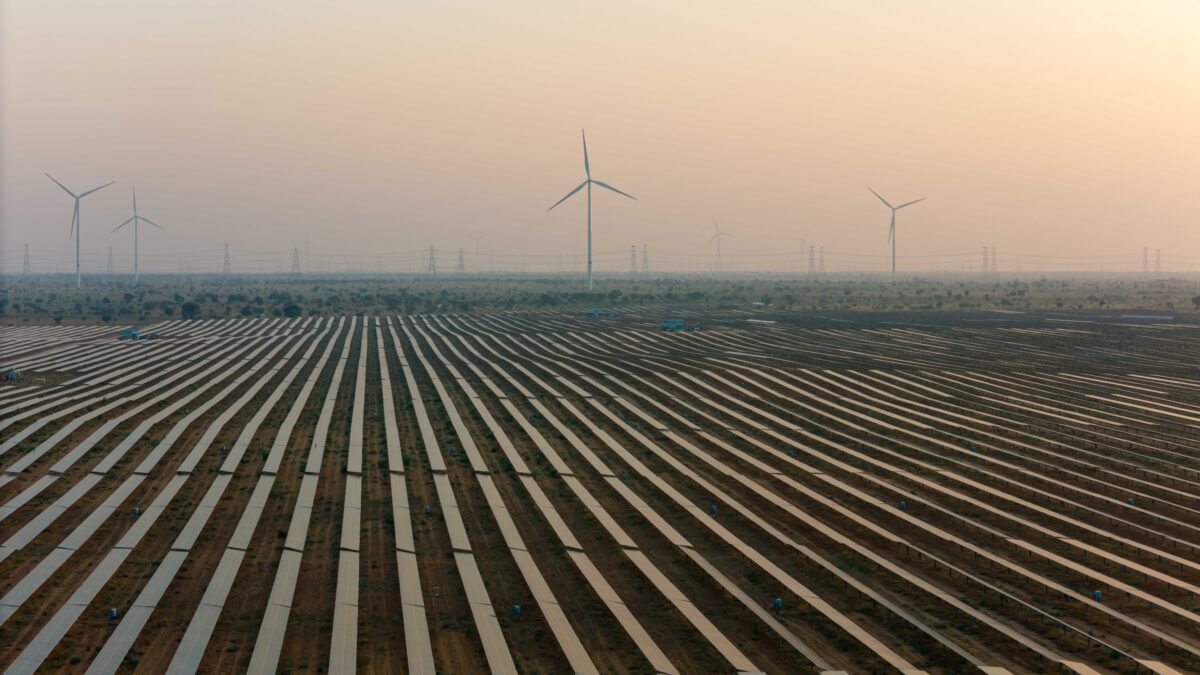India added 18.5 GW of renewable energy (RE) generation capacity in the fiscal year ending March 31, 2024. Solar (grid-scale and rooftop) continued to dominate annual RE capacity addition, accounting for 81% of the RE addition (15 GW) in FY 2024. Wind capacity addition stood at 3.3 GW, according to the latest edition of the CEEW Centre for Energy Finance (CEEW-CEF) Market Handbook released today.
Notably, for the first time since FY 2017, nuclear capacity (1.4 GW) was added in FY 2024.
The country’s total installed power generation capacity has now reached 442 GW, of which 144 GW (33%) is from RE sources and 47 GW (11%) from hydro. Consequently, the coal/lignite capacity share in India’s total installed capacity dropped below 50% for the first time.
As of Dec. 2023, 87.5 GW of renewable energy capacity was under construction, comprising 54.8 GW of solar, 19.2 GW of wind, and 13.2 GW of hybrid capacity, among others.
The report stated that RE auctions reached a record with 41 GW of auctioned capacity in FY 2024. Further, in this financial year, eight auctions with energy storage components were concluded, indicating a growing shift towards innovative power procurement formats.
Gagan Sidhu, Director, CEEW-CEF, said, “Ninety-five per cent of India’s targeted 50 GW annual RE bidding trajectory was met in FY24. Bids of 47.5 GW that were issued are approximately three times the RE capacity that has been added annually in recent years. Further, there is a clear tilt away from pure vanilla RE procurement. Innovative formats such as wind-solar hybrids, firm and dispatchable renewable energy (FDRE), and RE-plus-storage accounted for 37% of the capacity auctioned. Going forward, we can expect this share to increase further as innovative formats accounted for 57 per cent of bids issued. The sharp fall in the drop of battery energy storage systems (BESS) tariffs augurs well in this regard”
“India’s main challenge with RE now is the scale of financing. Specifically, how can it be ramped up 3x to finance bids of 47.5 GW that were issued? Unlocking the domestic bond market for corporate green bond issuances can be a catalyst to achieve this scale,” Sidhu added.
The CEEW-CEF report also found that peak power demand continued to rise in FY24, and reached a new high of 240 GW
Riddhi Mukherjee, Research Analyst, CEEW-CEF, said, “To fulfil India’s ever-increasing electricity requirement, the Ministry of Power amended the Electricity (Late Payment Surcharge and Related Matters) Rules of 2022, mandating the sale of un-requisitioned surplus power on exchanges. This move is expected to provide higher supply-side liquidity and further the discovery of competitive prices on the power exchanges.”
FY 2024 saw several policy moves to shift gears beyond utility-scale RE. For instance, PM Surya Ghar: Muft Bijli Yojana was introduced to increase rooftop solar installation in the residential segment, which could result in the addition of 30 GW, added Mukherjee.
On the green financing front, foreign direct investment (FDI) flows towards non-conventional energy exceeded $2 billion for the second consecutive year, according to the CEEW-CEF Market Handbook. Further, the Reserve Bank of India concluded four sovereign green bonds auctions of INR 20,000 crore (vs INR 16,000 crore in FY23), whose proceeds may be used to finance/refinance eligible green projects.
This content is protected by copyright and may not be reused. If you want to cooperate with us and would like to reuse some of our content, please contact: editors@pv-magazine.com.









By submitting this form you agree to pv magazine using your data for the purposes of publishing your comment.
Your personal data will only be disclosed or otherwise transmitted to third parties for the purposes of spam filtering or if this is necessary for technical maintenance of the website. Any other transfer to third parties will not take place unless this is justified on the basis of applicable data protection regulations or if pv magazine is legally obliged to do so.
You may revoke this consent at any time with effect for the future, in which case your personal data will be deleted immediately. Otherwise, your data will be deleted if pv magazine has processed your request or the purpose of data storage is fulfilled.
Further information on data privacy can be found in our Data Protection Policy.